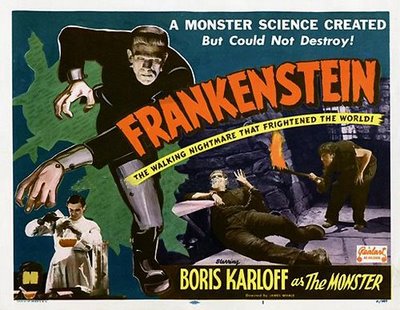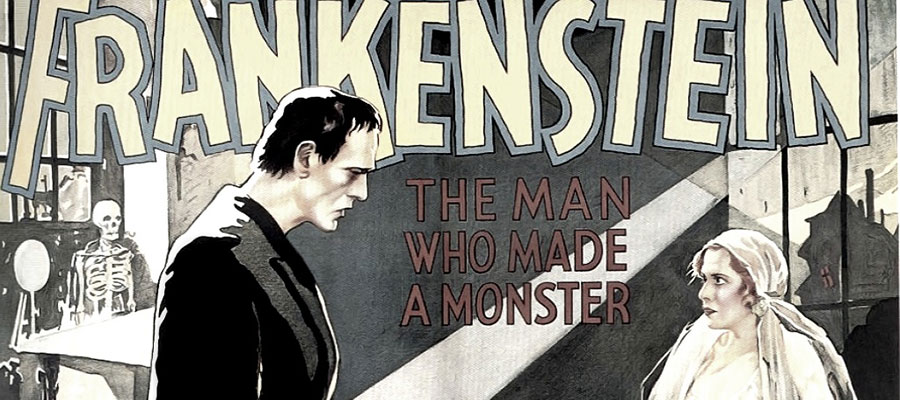
I cried at the end of Frankenstein (the 1931 Universal Pictures version, of course). I was probably five at the time, but even then I knew that there was something horribly unjust going on. The monster was a monster on the outside only and didn’t deserve to die.
That feeling never went away, though I came to understand what it was. As I got older, and read Mary Shelley’s novel, it struck me just how evil Dr. Frankenstein is. Much has been made of Frankenstein as an allegory for science out of control and what happens when men try to play God. I think it’s a much older and more universal story than that. Frankenstein is a villain not because he transgressed the limits of science, but because he didn’t take responsibility for it afterwards:
“I had desired it with an ardour that far exceeded moderation; but now that I had finished, the beauty of the dream vanished, and breathless horror and disgust filled my heart.”
Why was he so disgusted? Because his creation wasn’t as pretty as he’d hoped it would be. Everything bad that happens in the novel happens because Frankenstein abandons his creation. If he’d just been a good father to his creation everything would have been fine. After his abandonment, the monster actually tries to do good. It’s the world’s perception of him as a monster that results in bad things happening. Mel Brooks totally understood this. In Young Frankenstein, Frederick realizes the way to fix the situation is to take responsibility for the situation, treat his creation with love, and to teach him how to behave respectably.
The backstory of The Protos, of course, has its origins in Frankenstein. The villain of the piece is the scientist, not for creating the Protos but for discarding them. The Protos themselves look frightening but are good at heart. The tagline “Monsters science created but could not love!” is a play on the tagline for the 1931 film version of Frankenstein, “A Monster Science Created but Could Not Destroy!” because like Frankenstein’s monster, the Protos deserve love, not destruction.
